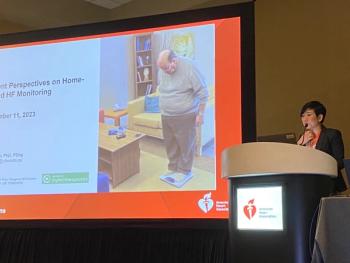
Three Ways to Alleviate Hospital Staffing Challenges through Technology
Technology can help cut back on unnecessary administrative tasks, improve task efficiency and better preserve staff resources.
After nearly three years of the pandemic, it appears that the healthcare industry is finally turning a corner. Hospitalizations are trending down, and overwhelmed ICUs have some breathing room again.
However, for many hospital systems, the pressure has increased in other ways. The convergence of COVID-19 and pre-existing staffing challenges is putting immense burden on hospitals, which are also grappling with a rise in complex patient care and growing burnout among staff. Fatigue is driving away nurses from the bedside at an alarming rate, and
While hospitals try innovative methods for recruitment and retention — from increasing compensation to partnering with nursing schools to fill the pipeline — the success of these efforts will be hindered without also re-tooling their approaches to workload and improving the day-to-day practices of case management nursing staff.
Case management in its current form involves inefficient, manual processes that make prioritization of tasks difficult, leading to inconsistent reviews and patient status flip-flopping. Not only is this unproductive for staff, but it can lead to delays for patients who otherwise should have been discharged, further straining tight resources. Effectively determining and administering the appropriate level of care for patients is the key to returning case management and utilization management to their patient-centered focus, removing friction — and frustration — within nurses’ jobs.
Technology has many applications within healthcare, and utilization management is no exception. There are three main ways that technology can help alleviate hospitals’ staffing challenges: solving for unnecessary administrative tasks, improving task efficiency and better preserving staff resources.
The myriad of administrative tasks outside of patient care can consume hours and add unnecessary workload to already strapped staff. From reviewing daily patient charts in the EMR to ongoing evaluation of medical necessity, case management nurses often spend the majority of their day on these behind-the-desk tasks.
But it doesn’t have to be this way. Using artificial intelligence technology to automate repetitive work frees up staff to focus their efforts on more complex tasks that require human intervention.
Instead of going top-to-bottom reviewing patient censuses, predictive AI technology can stratify reviews based on risk, allowing for enhanced management and opportunity capture. By automating ongoing rote administrative tasks, hospital staff can work more efficiently, prioritizing their day on the most pressing activities that utilize their expertise. Nurse care managers can spend more time at the bedside with patients, better evaluating discharge readiness and building a solid care transition plan. Giving nurses more time in front of patients also leads to improved job satisfaction, reducing the likelihood of burnout and attrition.
Refocusing nurse case managers on higher risk patients not only saves utilization review resources but improves patient flow through the hospital system as well. This creates a positive feedback loop where patients are appropriately assigned care, allowing for efficient use of resources to ease hospital system strains that have become all too common over the last few years.
The healthcare system is steadily growing more complex, necessitating the implementation of innovative solutions to streamline where possible. By applying AI and machine learning-fueled technologies to review processes, hospitals can transform the way they leverage analytics, enabling staff to become better nurse care managers, better clinical thinkers, and more patient focused, ultimately leading to improved job satisfaction among nurses with a more seamless system for patients and care delivery personnel alike.
Heather Bassett, M.D., is chief medical officer of XSOLIS.
Newsletter
Get the latest industry news, event updates, and more from Managed healthcare Executive.





















































